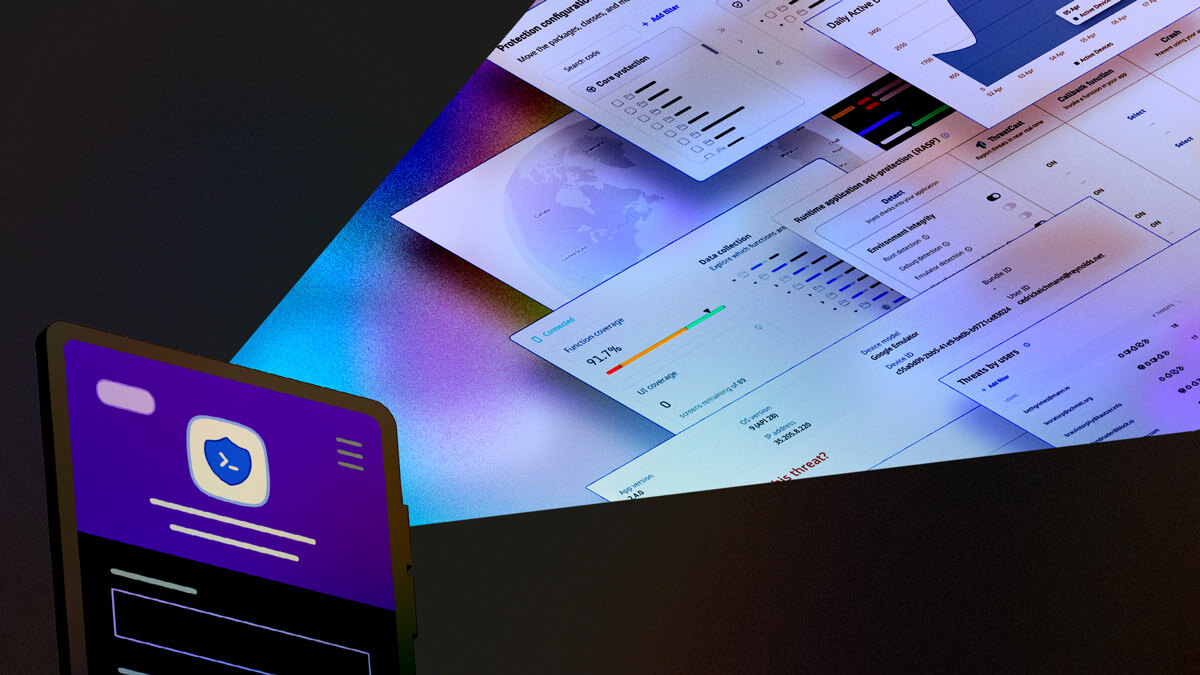A Shift in the Mobile App Security Mindset from Reactive to Proactive

In an era where mobile applications power our daily lives, from seamless financial transactions to safeguarding personal health data and enabling secure communications, their importance is undeniable. Yet, with this growing reliance comes an ever-increasing threat landscape. Cybercriminals are adapting at an alarming rate, leveraging new techniques to take advantage of security gaps faster than developers can patch them. The battle for mobile app security is no longer just a technical challenge; it’s a high-stakes race against evolving cyber threats, where the cost of failure is steep and the margin for error is limited.
Security is no longer an afterthought or an optional add-on. The demand for proactive fraud prevention is surging, with 82.4% of consumers preferring robust security measures over post-breach remedies. Users no longer trust businesses that scramble to fix vulnerabilities after an attack—they expect security to be ingrained from the outset. This shift in expectations has put immense pressure on developers and security teams to deliver airtight protection without compromising app performance or the development timeline.
However, the challenge remains: how can development teams—many of whom lack deep cybersecurity expertise—implement robust security measures without slowing down innovation? Guardsquare has answered this call with a guided workflow that transforms mobile app security from a complex burden into a seamless, intuitive process.
Security without compromise in less than a day
Traditionally, mobile application protection has often required developers to make trade-offs between security, performance, and ease of integration. Some solutions rely on third-party SDKs that can introduce serious security gaps, while others encrypt the entire codebase into a binary blob, essentially wrapping your code with a single layer of protection, leaving a single point of failure to be easily exposed to the attacker.
Guardsquare’s compiler-based approach eliminates these concerns by embedding security directly into an application’s code at the compilation stage.
A compiler-based approach is crucial for implementing effective code obfuscation. Guardsquare’s method mirrors the functionality of a compiler by directly modifying the code rather than encapsulating the code with a simple layer of protection. Because compilers inherently regenerate an application's code, they offer an optimal foundation for seamlessly integrating security measures. This enables sophisticated code analysis and transformation techniques, making it a key component of modern software protection.
One of the primary benefits of compiler-based obfuscation is its ability to introduce randomized variations in code semantics, structure, and placement with minimal developer effort.
This technology enables implementing multiple layers of protection, ensuring:
- Resilience against reverse engineering with adaptive protection: By applying polymorphic obfuscation, every build is unique, making it significantly harder for attackers to analyze and manipulate code.
- Defense in depth: Various security measures, including obfuscation techniques and automatic runtime application self-protection (RASP), work together to provide holistic security coverage.
- Seamless performance: Unlike traditional security methods that may impact app speed or responsiveness, Guardsquare’s compiler-based approach ensures that security does not come at the cost of performance.
But the most groundbreaking aspect of the guided workflow is its ease of implementation - in less than a day, organizations can achieve market-leading protection.
Simplifying security with the guided workflow
One of the biggest obstacles to implementing robust mobile app security has historically been complexity. Even seasoned developers often struggle to configure security settings optimally, leading to gaps in protection. Guardsquare’s guided workflow changes the game by providing an intuitive experience that simplifies security implementation while maintaining flexibility.
How the guided configuration works:
- Instrument and profile for precision
- Before applying protection, Guardsquare’s guided workflow helps developers instrument their app to collect critical metadata about your application (e.g. names of classes, methods, strings). Unlike other solutions that require uploading your unprotected app to external servers, Guardsquare’s processing occurs entirely within your local development environment or CI system, ensuring your source code and sensitive binaries remain secure and private.
- This profiling phase identifies performance-sensitive areas and ensures that security measures do not introduce unintended instability or slowdowns.
- Apply layered security without guesswork
- Developers can select protection settings based on real insights rather than trial and error.
- The guided workflow helps ensure the proper security techniques are applied exactly where they are needed, removing the need to compromise on security and performance.
- Gain continuous visibility and threat intelligence
- Guardsquare provides clear visibility into security implementations and past builds, allowing developers to track protection history.
- Integrated threat monitoring ensures that security remains an ongoing, proactive process rather than a one-time implementation.
By taking the guesswork out of security, Guardsquare enables development teams to focus on what they do best—building high-performing apps while ensuring their applications are protected against emerging threats.
Stability meets security without compromise
A common concern among developers is that rigorous security measures could introduce performance issues or app instability. Reflection-heavy code, in particular, is notoriously susceptible to problems when subjected to aggressive obfuscation.
Guardsquare addresses this challenge head-on through meticulous instrumentation and profiling. By analyzing an app’s execution paths and identifying reflection-heavy areas, Guardsquare ensures that security measures do not interfere with the app’s core functionality. This means developers no longer have to choose between stability and security—they can have both.
Moreover, runtime protection techniques such as RASP can be fine-tuned to avoid unnecessary strain on an application. By leveraging profiling data, Guardsquare ensures that runtime security mechanisms do not disrupt performance-critical sections of the app. This tailored strategy guarantees that security remains effective without compromising user experience and is unique to your app.
RASP: The final line of defense
While obfuscation strengthens an app’s defenses against static analysis and reverse engineering, runtime protections are essential to combat dynamic attacks. Guardsquare’s automatic RASP capabilities take this defense a step further by actively monitoring the app’s execution environment and suspicious activity in real time, strengthening your mobile app’s defenses and building a proactive security ecosystem.
Through Guardsquare’s guided workflow, developers can:
- Enable a wide range of runtime protections: detect debuggers, hooking frameworks, and emulators among others, that attackers may use.
- Customize threat responses: Decide whether to terminate the app, log the incident, or alert a backend monitoring system.
- Gain actionable insights: Use threat intelligence to understand attack patterns and reinforce defenses over time.
By integrating RASP seamlessly into the development workflow, Guardsquare ensures that mobile apps are protected not only at the code level but also in live execution environments.
From complexity to confidence: How Guardsquare’s guided workflow is redefining mobile app security
For too long, mobile app security has been reactive—addressing breaches after they occur rather than deterring them. Guardsquare’s guided workflow marks a shift toward a proactive security mindset, making it easier than ever for developers to build secure applications from the ground up.
The guided workflow benefits businesses and consumers alike:
- For developers: It reduces the learning curve associated with security implementation, allowing teams to deploy the best mobile app protection in the market in less than a day.
- For security teams: It provides visibility into security measures and threat activity, enabling better collaboration between development and security functions.
- For consumers: It delivers the peace of mind that comes with knowing their data is protected by security measures that are integrated, tested, and continuously monitored.
Secure by design, ready for the future
As mobile threats continue to evolve, app security can no longer be an afterthought. Guardsquare’s guided workflow ensures that security is not only robust but also accessible, enabling every developer—regardless of their security expertise—to build secure applications with confidence.
With a compiler-based approach, instrumentation-driven stability, and seamlessly integrated obfuscation techniques and RASP protections, Guardsquare is redefining mobile app security. It’s not just about adding security features; it’s about embedding security into the very fabric of mobile applications.
Developers no longer need to choose between ease of use and the highest level of security. With Guardsquare, they can have both effortlessly.
Ready to make mobile app security effortless? Start with Guardsquare today.





